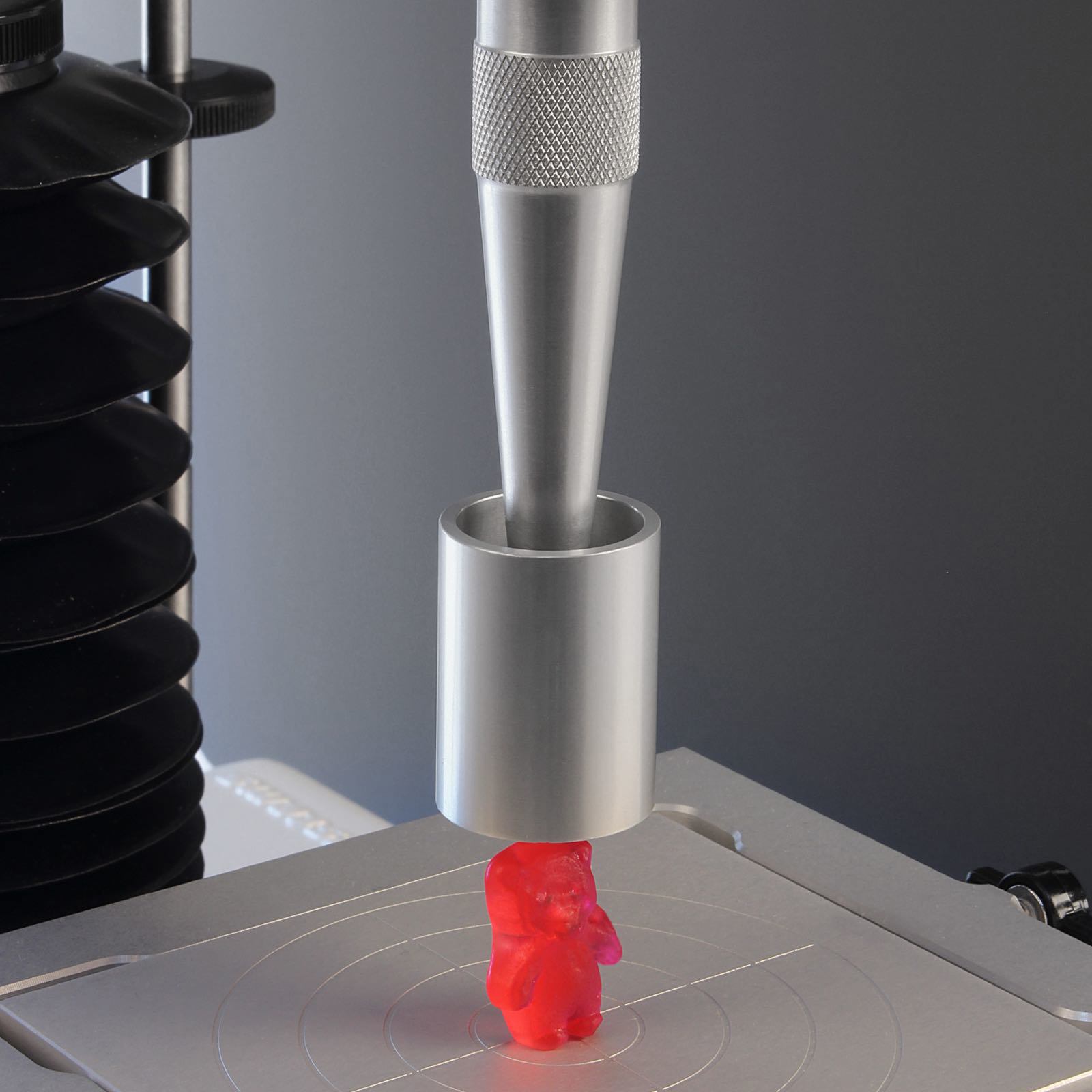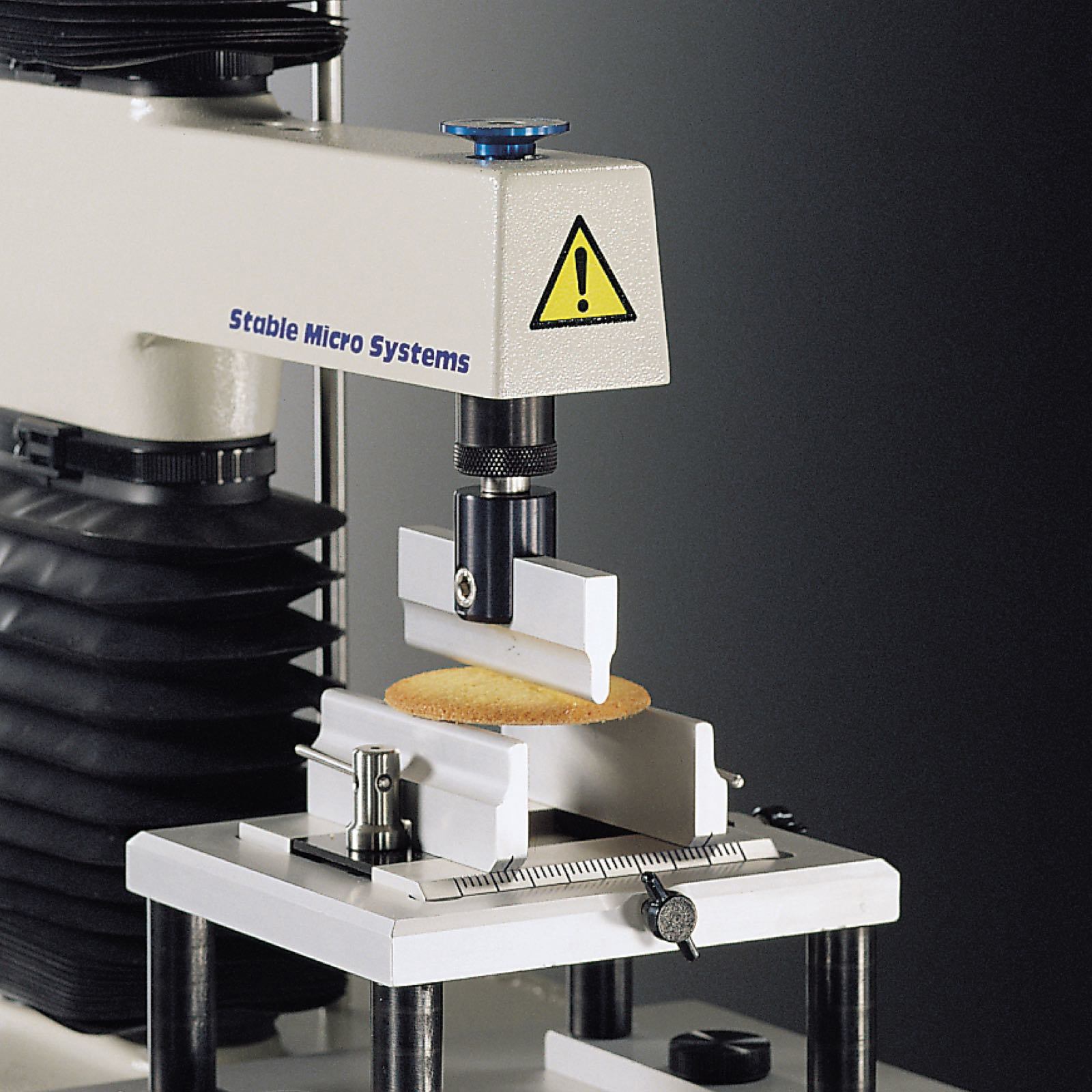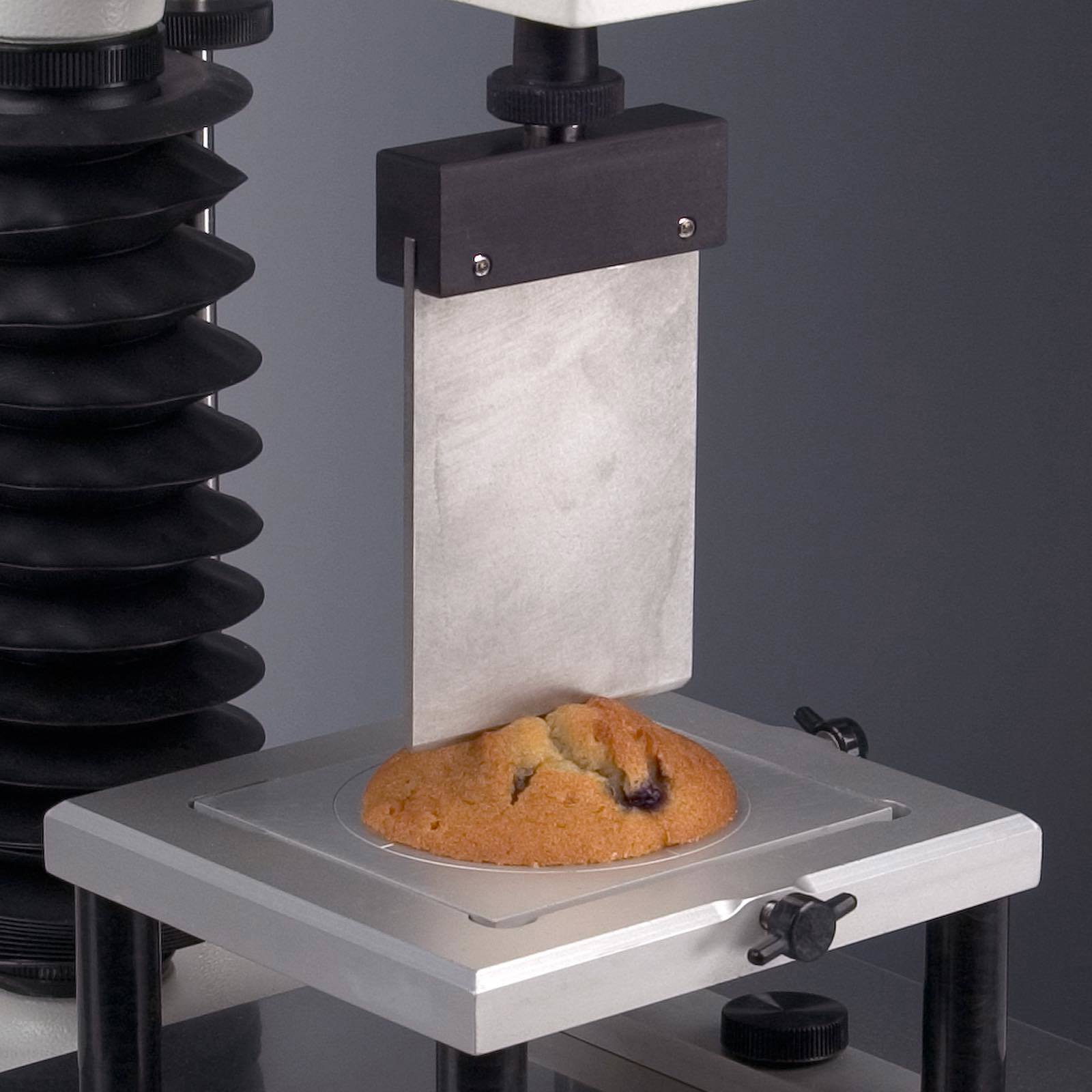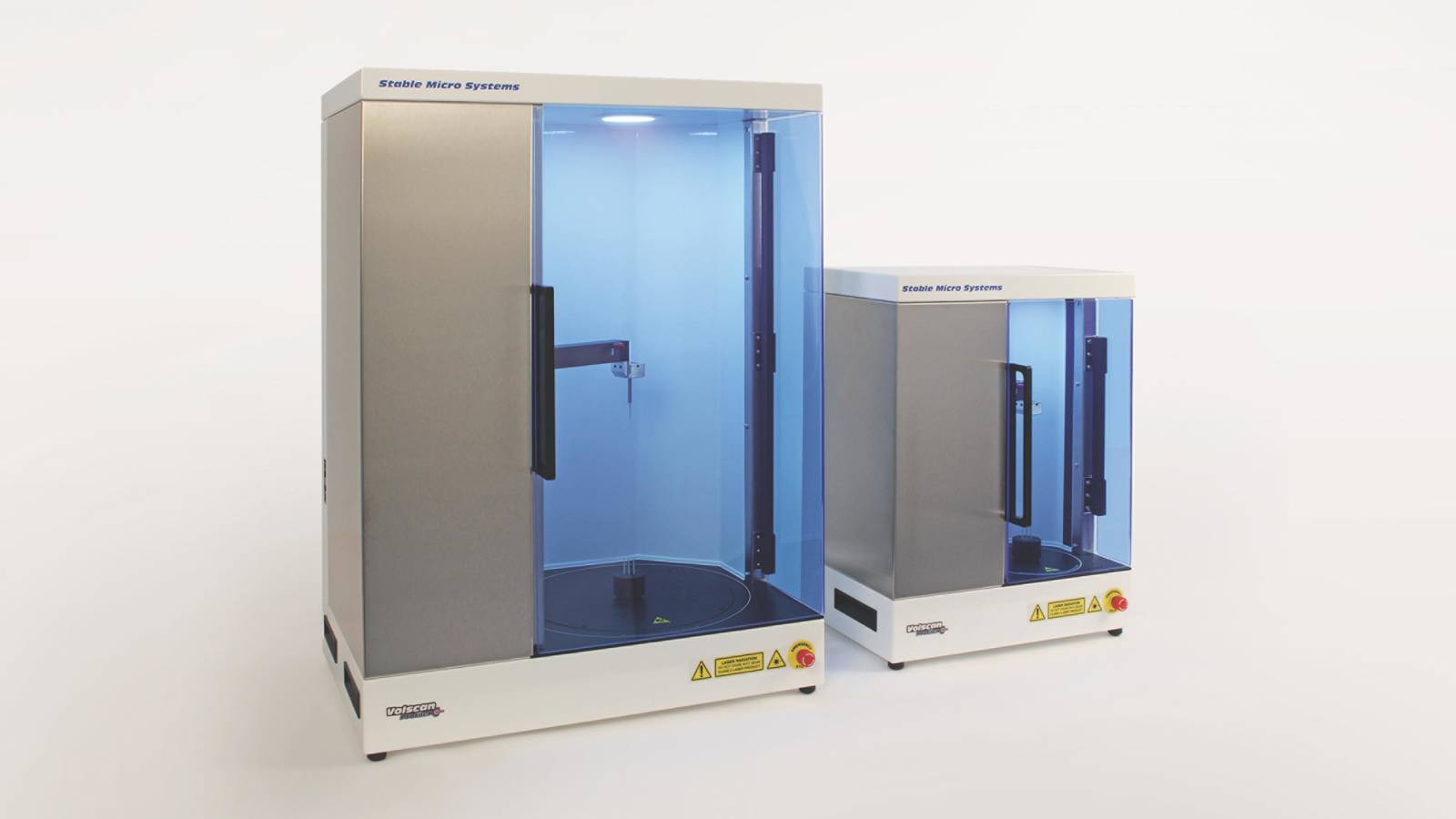
Measure the texture of 3D printed food
Learn how to create your 3D printed food products with optimisation of texture at the top of your list of objectives.
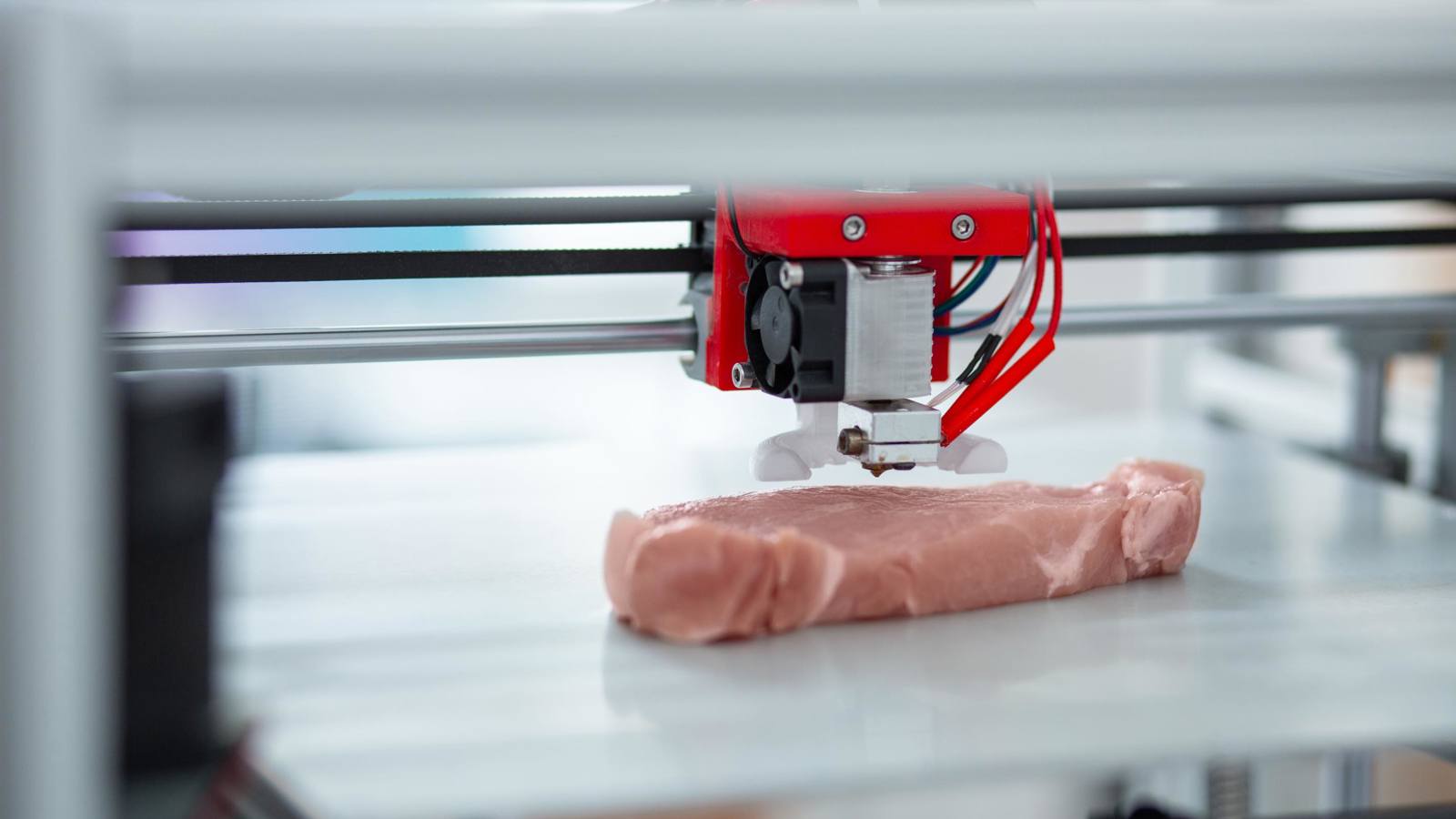
Opportunity in 3D printed food
There’s a new frontier in 3D printing that’s only beginning to come into focus: food. Recent innovations have made possible machines that print, cook, and serve foods on a mass scale. People’s growing awareness of the food that they consume and the drive for new customised sensory experiences is pushing for the development of new technologies that can satisfy these new consumers’ standards. 3D printing has made a large impact in many sectors, but its entry into the food industry has not been a simple journey. However, the potential benefits of incorporating 3D printing into food manufacture are significant and far outweigh any teething problems. 3D food printers could:
- Improve the nutritional value of meals – a food product or a whole meal can have its ingredients tailored to meet the needs or dietary requirements of a patient in hospital or a care home, leading to a more fortified diet or better recovery. 3D printing also has the potential to make life easier for those people who use health trackers. There is a possibility that in the future, the user’s fitness tracker can send data to the 3D printer, which will output a meal perfectly tailored to that person’s requirements. This ‘personalisation’ has been pointed as the driving force to disrupt traditional ways to produce and deliver food and enchant a variety of customers.
- Produce intricate, imaginative sculptures out of everyday foodstuff giving freedom to chefs and manufacturers. This would enable the creation of food products with specific design characteristics, flavours and colours, geometric structures and textural experiences for the consumer. This includes tailoring food to special events, or to incorporate customers’ names or images and thereby enabling customisable appearance.
- Reduce food waste – using up food that is otherwise destined to be thrown away. This food might not be attractive enough for sale, such as the ugly leftovers from the production process. However, it can be formed into a more appetising shape with the help of 3D printing. Food products can be printed on demand, so perishable products can be manufactured as and when their need arises. The technology is exciting and opens doors to a sustainable future.
- Reduce labour costs and save time as there is no need for manual operation once the print has been launched.
- Solve hunger in regions of the world that lack access to fresh, affordable ingredients.



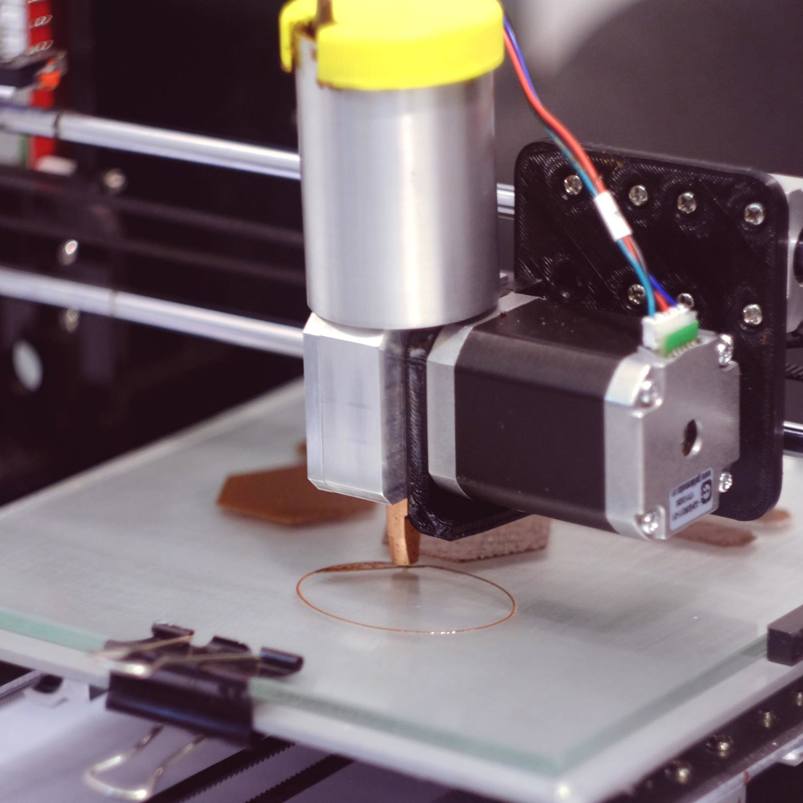
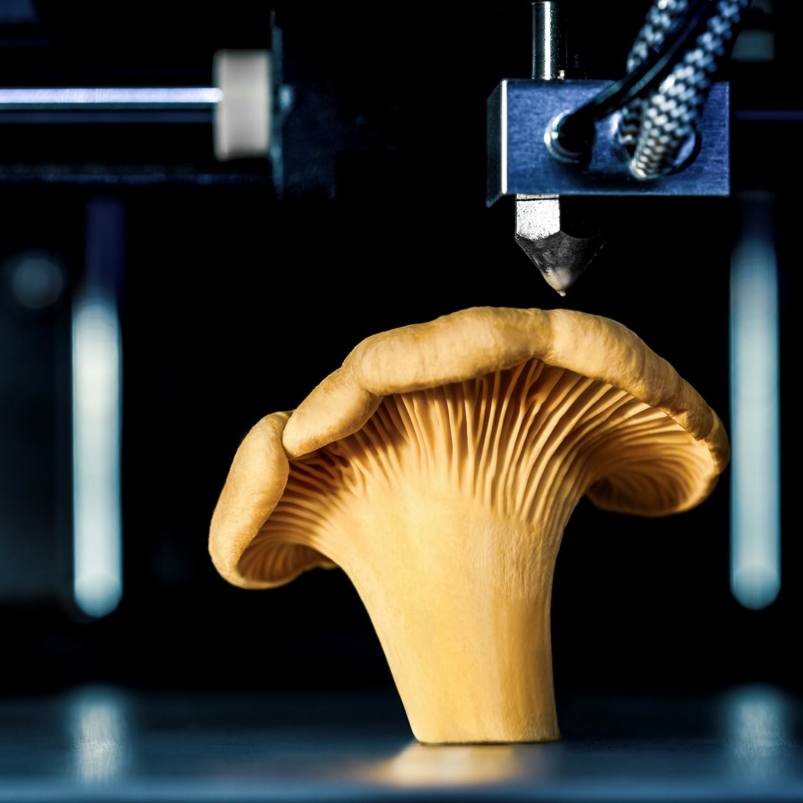
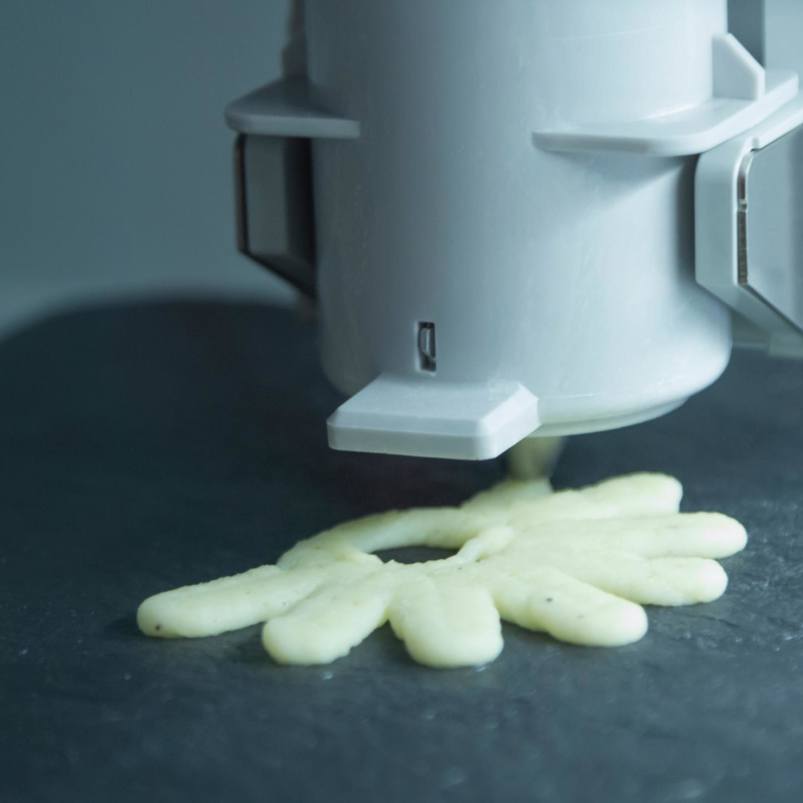
How food is 3D printed
Extrusion, selective laser sintering and binder jetting, and inkjet printing are the three main processes used in 3D printing for food although there are several strategies for achieving the required result within those three techniques. Extrusion is a simple concept, with a nozzle pushing out a layer of food in a similar way that a 3D printer can extrude plastic to make a machine part. Hot-melt extrusion employs food material that has been heated just over its melting point, then extruded and solidified. Chocolate is frequently printed using this method due to its capacity to solidify quickly after being heated.
Selective laser sintering is the technical term for powdered foods being heated up and then being forced to bond to form some solid structure. As it necessitates the use of powdered substances, it's typically employed to make sweets or candies. Inkjet printing relies on gravity to print, with edible 'food ink' being deposited onto a surface, usually that of another food.
Pioneers in 3D printed foods
Some corporations are already using this technology in the fabrication of their products, such as Hershey’s (chocolates), Barilla (pasta noodle), Ruffles (potato chips), Oreo (cookies), and Mazola (fruits and vegetables). In the production of meat-based products, Aleph Farms and Meatech use 3D Printing in the production of laboratory-grown meat.
For consumers who avoid meat for animal welfare or environmental concern reasons, there are companies like Redefine Meat and Novameat who are researching meat that has had its whole structure 3D printed from plant based materials. A common drawback of plant based meat substitutes is that their texture is not close enough to the real thing. However, 3D printing allows structure to be perfectly tailored, fine tuning it to match the mouthfeel and textural parameters of a real piece of meat. You can print layers with 3D printing technology, and each layer can provide something different – such as 'alternative fat' or 'alternative muscle' – so that when you bite into a vegan steak, you get texture in one area, the taste and sensation of fat in another, and the tender meat flavour in yet another. This ‘alt-meat’ is a radical step forward and for this type of food research, a Texture Analyser is essential.
Texture challenges in 3D printed foods
3D-printed foods present unique texture and quality control challenges:
- Ingredient suitability: Not all ingredients print the same – consistency must be right for flow and layer formation.
- Taste and texture: Layering, infill structure, and print speed all affect bite, chew, and mouthfeel.
- Fragility: Ornate designs (like lace biscuits) need to be tested for breakage and storage durability.
Texture is a critical marker of consumer acceptance – matching expectations for crunch, firmness, or tenderness keeps your products competitive and enticing.
How texture analysis powers 3D food innovation
Stable Micro Systems manufactures instruments that measure the tensile and compressional properties of raw ingredients, individual materials and finished products. It is important to measure the textural properties of food to ensure they match the expectations of a consumer. As with any manufacturing innovation the end-product must go through a quality control process to assess its mechanical (and sensorial) properties. A Texture Analyser is a crucial part of this procedure, giving a reliable way to test products by applying a choice of compression, tension, extrusion, adhesion, bending or cutting tests to measure their physical or textural properties e.g. firmness, stickiness, crispiness and extensibility, to name but a few.
A Texture Analyser is your lab’s most valuable tool for 3D food product R&D, allowing you to:
- Objectively test firmness, crispiness, extensibility, and bite force
- Measure effects of new ingredients and iterations on texture quality
- Optimise nutritional upgrades (e.g., more protein, fibre) without sacrificing mouthfeel
- Compare 3D printed vs. “real” foods on key attributes
How texture of 3D printing food materials can be measured
Compression and Extrusion
Food materials for printing should have adequate rheological properties that can be easily extruded and maintain their shape. However, there are very few foods that meet this condition and it is still a challenge to process many food materials to be applicable to this method. Any materials that are proposed for 3D printing will require ‘printability’ testing to ensure they possess the correct rheological properties or consistency. Formulations will need to be assessed for their extrudability and the resulting printed products measured by way of a compression test to ensure the texture matches customer expectation.
Here are specific research examples of where texture analysis has been applied in this way:
- 3D printing of gels based on xanthan/konjac gums
- Printability and Physicochemical Properties of Microalgae-Enriched 3D-Printed Snacks
- Customized Shapes for Chicken Meat–Based Products: Feasibility Study on 3D-Printed Nuggets
- Feasibility study of hydrocolloid incorporated 3D printed pork as dysphagia food
Fracture and bending
The Texture Analysis involved in a food 3D printing study is no different from ordinary food Texture Analysis. Printed products such as chocolate may need to be tested in a similar way that they are assessed by a consumer. The method used is simply suited to the food in question, perhaps with emphasis on a property that could vary the most with the 3D printing process. For example, 3D printed biscuits are frequently used as a novelty food as it is so simple to change their colour or design. However, to show off the capability of the 3D printing process, ornate, lacy, open designs are often used. These are not particularly strong and may break apart in storage or transit. To assess their strength, a standard biscuit bend test is used, putting to use a TA.XTplusC Texture Analyser and a Three Point Bend Rig. The fracture strength of various designs can be assessed in this way.
Cutting
How a printed food is bitten into is another parameter of interest. Varying print materials and the internal infill structure can affect the ‘hardness’ of the end product. Many foods are inserted between the upper and lower incisors and bitten into. The force required to do this gives the consumer an indication of its toughness or ‘bite force’. This type of test can be easily imitated using a Texture Analyser with a knife blade attached.
Why industry leaders use texture analysis in 3D food printing
- NASA x BeeHex: 3D printing for astronaut meals – a Texture Analyser guarantees on-board quality and satisfaction.
- Alternative proteins: Print insect or plant-based proteins into appealing, consumer-friendly shapes and textures.
- Process optimisation: Adjust print conditions (speed, nozzle size) and objectively measure their impact on finished products.
See texture analysis in 3D printing research
How a Texture Analyser can assess 3D printer base powder flowability
Texture Analysis can also be put to use at other stages in the 3D printing process, not just for the measurement of final product properties. For example, the properties of the base powder used in Selective Laser Sintering affect the sintering process as well as the properties of the final product. Powder flow is one of these properties. As each new layer of powder is swept onto the sintering bed, the layer should be uniform and of the correct thickness and distribution. A Powder Flow Analyser (PFA) is a very useful add-on to a Plus Connect Texture Analyser to help measure these flow properties.
The PFA proves an accurate and reliable method of measuring the flow characteristics of dry and wet powders, with capability to measure cohesion, caking and speed flow dependence as well as bulk density and other properties.
The need to measure dimensional profiles
If you’ve designed a product in a CAD package and then you print it, one concern will be whether what has been printed is what you designed. In many cases you’ll need your printed object to be dimensionally accurate and iterations of printing your design are almost inevitable to adjust the printing settings to obtain a product that is dimensionally accurate. Accurate digital assessment of physical dimensions thereby becomes a necessity. The Volscan Profiler provides such a solution – a benchtop laser-based scanner that measures the volume, density and dimensional profiles of solid products.
Typical ways of mounting samples in order to scan and measure their dimensional profiles:
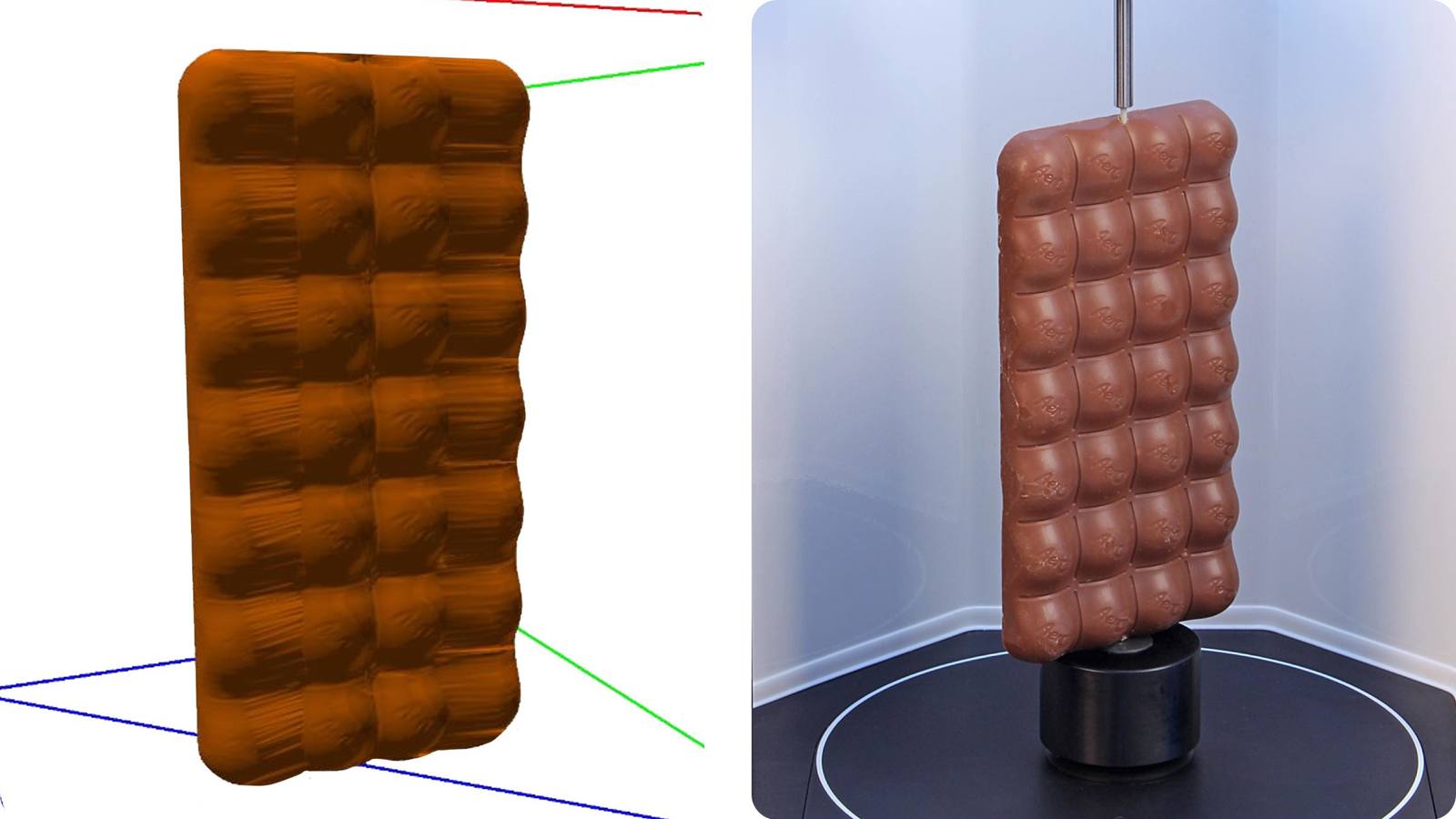 Archived scan of sample; Chocolate bar sample ready for scanning
Archived scan of sample; Chocolate bar sample ready for scanning


